A : Voltage drop or gain across a capacitor depends on the direction of current and increase opposite to the direction of current .
R : Voltage drop or gain across a capacitor depends on the direction of current .
If both Assertion & Reason are true and the reason is the correct explanation of the assertion , then mark
If both Assertion & Reason are true but the reason is not the correct explanation of the assertion then mark.
If Assertion is ture statement but Reason is false , then mark
If both Assertion and Reason are false statements then mark.
The correct Answer is:C
To solve the problem, we need to analyze the statements A and R regarding the voltage drop or gain across a capacitor in relation to the direction of current.
1. Understanding the Assertion (A):
- The assertion states that "Voltage drop or gain across a capacitor depends on the direction of current and increases opposite to the direction of current."
- This means that if the current flows in one direction, the voltage drop across the capacitor will be measured differently than if the current flows in the opposite direction.
2. Analyzing the Reason (R):
- The reason states that "Voltage drop or gain across a capacitor depends on the direction of current."
- This is a fundamental property of capacitors. The voltage across a capacitor is related to the charge stored on it and the direction of current flow affects how we measure this voltage.
3. Applying Kirchhoff's Voltage Law (KVL):
- In a circuit with a resistor (R) and a capacitor (C), we can apply KVL.
- If we assume a current (I) flowing through the circuit, we can write the KVL equation:
V−IR−QC=0
- Here, V is the voltage source, IR is the voltage drop across the resistor, and −QC is the voltage drop across the capacitor.
4. Understanding Voltage Drop Across Capacitor:
- If the current is flowing in the direction from the positive plate to the negative plate of the capacitor, the voltage drop across the capacitor is given by:
VC=−QC
- If we consider the current flowing in the opposite direction, the voltage drop would be:
VC=QC
- This shows that the voltage drop across the capacitor indeed depends on the direction of the current.
5. Conclusion:
- Both the assertion (A) and the reason (R) are correct. The assertion accurately describes the behavior of voltage across a capacitor, and the reason supports this assertion by stating the dependency on current direction.
- Therefore, the answer is that both statements are correct.
Final Answer:
Both the assertion (A) and the reason (R) are correct.
- The assertion states that "Voltage drop or gain across a capacitor depends on the direction of current and increases opposite to the direction of current."
- This means that if the current flows in one direction, the voltage drop across the capacitor will be measured differently than if the current flows in the opposite direction.
- The reason states that "Voltage drop or gain across a capacitor depends on the direction of current."
- This is a fundamental property of capacitors. The voltage across a capacitor is related to the charge stored on it and the direction of current flow affects how we measure this voltage.
- In a circuit with a resistor (R) and a capacitor (C), we can apply KVL.
- If we assume a current (I) flowing through the circuit, we can write the KVL equation:
V−IR−QC=0
- Here, V is the voltage source, IR is the voltage drop across the resistor, and −QC is the voltage drop across the capacitor.
- If the current is flowing in the direction from the positive plate to the negative plate of the capacitor, the voltage drop across the capacitor is given by:
VC=−QC
- If we consider the current flowing in the opposite direction, the voltage drop would be:
VC=QC
- This shows that the voltage drop across the capacitor indeed depends on the direction of the current.
- Both the assertion (A) and the reason (R) are correct. The assertion accurately describes the behavior of voltage across a capacitor, and the reason supports this assertion by stating the dependency on current direction.
- Therefore, the answer is that both statements are correct.
Both the assertion (A) and the reason (R) are correct.
Similar Questions
Knowledge Check
In the circuit shown in figure, the final voltage drop across the capacitor C is :
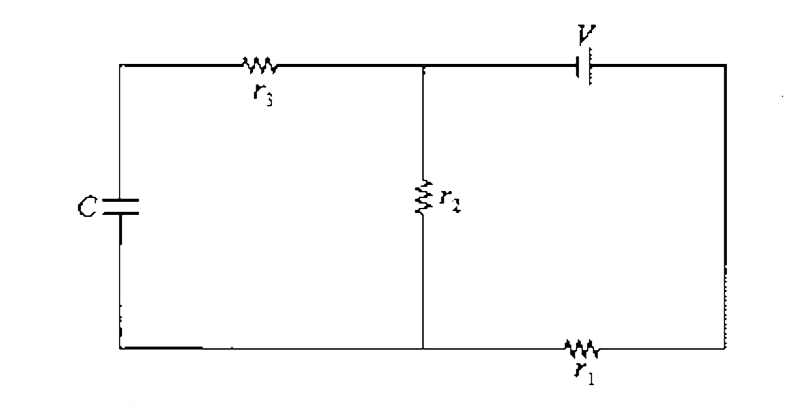 AVr1r1+r2BVr2r1+r2CV(r1+r2)r2DV(r2+r1)r1+r2+r3
AVr1r1+r2BVr2r1+r2CV(r1+r2)r2DV(r2+r1)r1+r2+r3A : The voltage across a battery may be less, equal or more than the emf of the battery.
R : Voltage across a battery also depends on the magnitude and direction of current .AIf both Assertion & Reason are true and the reason is the correct explanation of the assertion , then markBIf both Assertion & Reason are true but the reason is not the correct explanation of the assertion then mark.CIf Assertion is ture statement but Reason is false , then markDIf both Assertion and Reason are false statements then mark.In the given circuit, with steady current, the potential drop across the capacitor must be
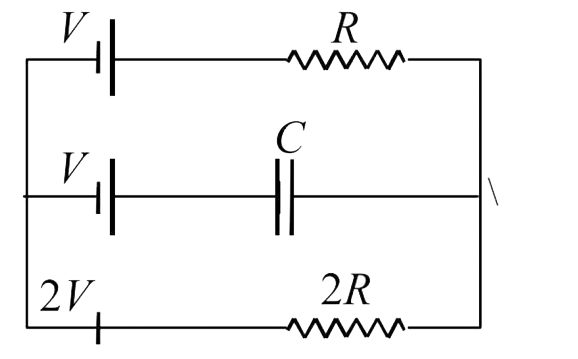 AVBV/2CV/3D2V/3
AVBV/2CV/3D2V/3
In the given circuit, with steady current, the potential drop across the capacitor must be
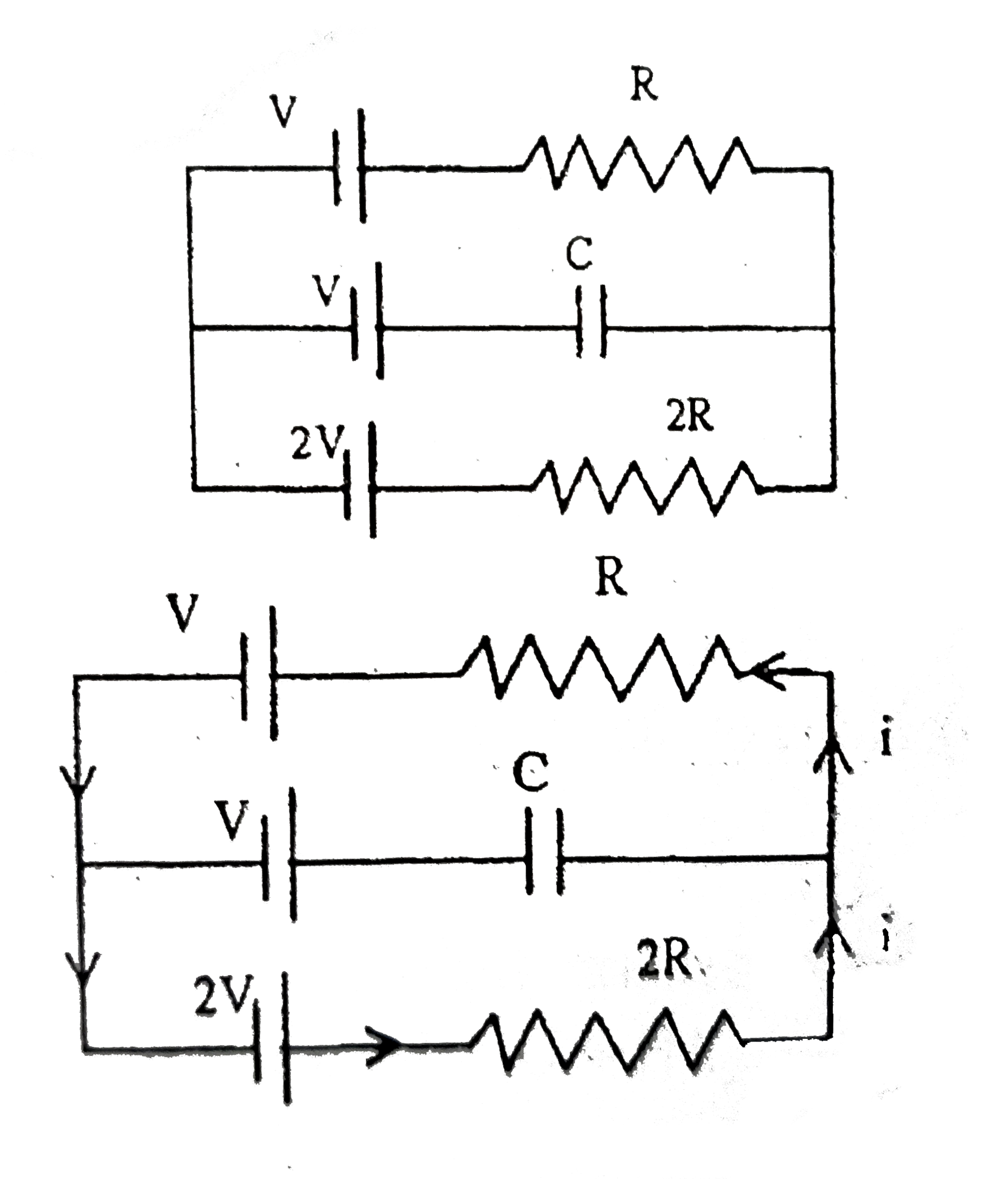
View SolutionIn the given circuit, with steady current, the potential drop across the capacitor must be

View SolutionIn the given circuit, with steady current, the potential drop across the capacitor must be
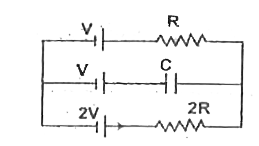
View SolutionThe voltage gain of a triode depends upon
View SolutionFind the potential drop across the capacitor in the given circuit.
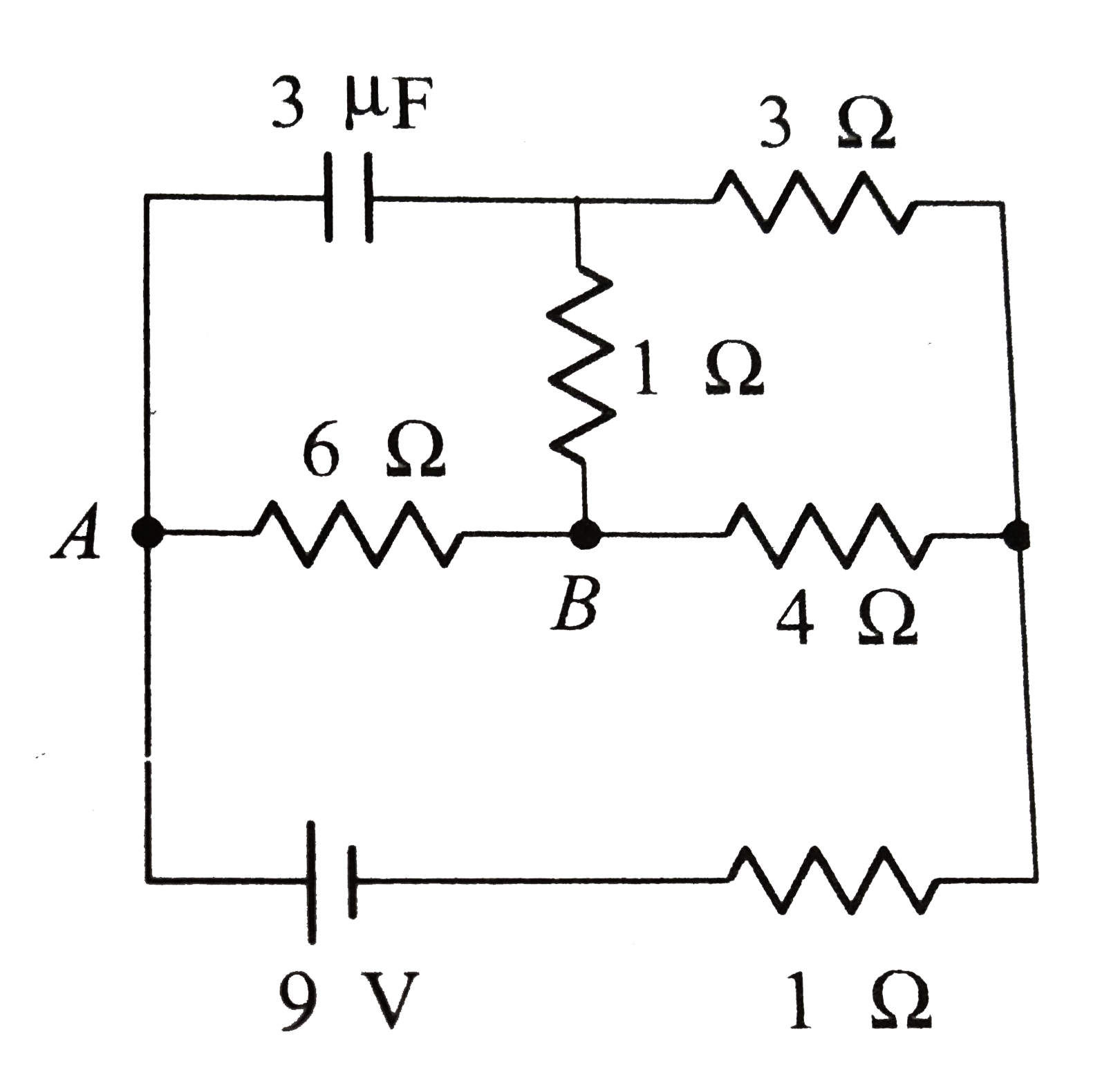
View Solution


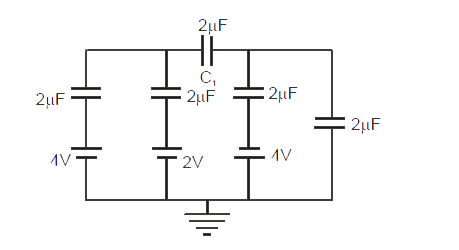 Find voltage across capacitor
Find voltage across capacitor